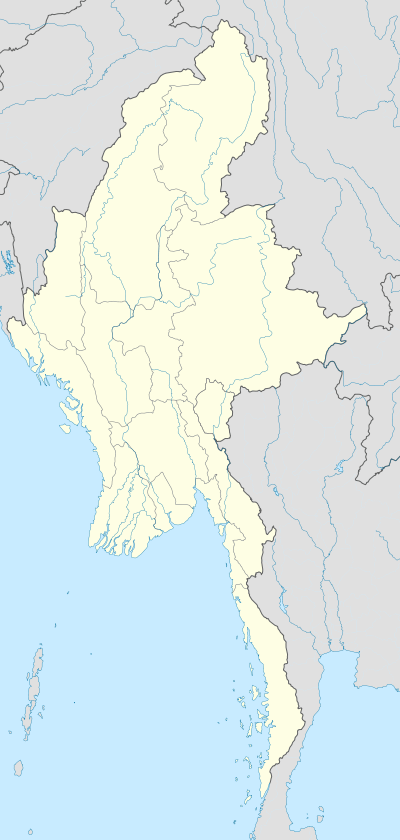Tamanthi Wildlife Reserve
| Tamanthi Wildlife Reserve | |
|---|---|
|
IUCN category IV (habitat/species management area) | |
 Location within Burma (Myanmar) | |
| Location | Hkamti District, Sagaing Region, Burma (Myanmar) |
| Coordinates | 25°21′50″N 95°33′36″E / 25.364°N 95.56°ECoordinates: 25°21′50″N 95°33′36″E / 25.364°N 95.56°E[1] |
| Area | 830.40 sq mi (2,150.7 km2) |
| Established | 1974 |
Tamanthi Wildlife Reserve is a wildlife reserve of Burma (Myanmar). It was established on April 11, 1974 on the eastern bank of the Chindwin River, across from the town of Tamanthi. It lies within the Hkamti District of Sagaing Region, and covers 830.40 sq mi (2,150.7 km2),[2] bounded between the Uyu and Chindwin rivers with 230.40 sq mi (596.7 km2) of the area in Homalin Township, and 600 sq mi (1,600 km2) in Hkamti Township.
The sanctuary is home to Indochinese tigers, Indian elephants, gaur (Asiatic bison), Indochinese leopards, serow, and bear. In all over 30 mammals are found there.[3] Formerly it was the home of the Northern Sumatran rhinoceros (Didermocherus Sumatrensis lasiotis) and the Indian Javan rhinoceros (Rhinoceros sondaicus inermis), which seem to have become extinct in the area in the 1980s.[4] In the past, it was a favourite ground for wild life hunters and poachers, because its remoteness had preserved a high biodiversity.[4] Folklore has the area as a home for were-tigers, who appear to hunters as beautiful young girls in the day time, only to become ravening beasts at night.[5] Among the many birds found in the reserve are the white-winged wood duck (Cairina scutulata) and the masked finfoot (Heliopais personata).[5] Of note among the reptiles is an endangered species of roofed turtle which are found there.[3]
Notes
- ↑ "Htamanthi Wildlife Sanctuary". protectedplanet.net.
- ↑ "National Parks and Nature Reserves" World Institute for Conservation and Environment (WICE), last accessed 12 October 2010
- 1 2 "Htamanthie wildlife sanctuary (Homalin Township, Sagaing Division)". Myanmar Walker. Retrieved 2010-10-12.
- 1 2 Rabinowitz, Alan (2002) "Ground Truthing Conservation: Why Biological Exploration Isn’t History" Conservation Magazine 3(4): pp. 20–25
- 1 2 Sein Tu (2002). "Tamanthi Wild-life Sanctuary". Department of Psychology, University of Mandalay. Retrieved 2010-10-12.
External links
- "ထမံသီ ေရကာတာျပ ေျမပုံ" Map showing Tamanthi Wildlife Sanctuary